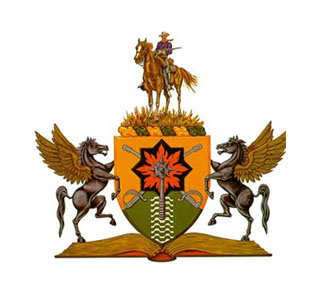History of Saint George
We believe that the man who became known as St. George was born in about 280 AD in a region of what is now modern Greece. As a result of his personal bravery, this man -- then known as Nestor of Cappodocia -- became a member of the Roman Emperor Diocletian’s personal bodyguard. In 303 AD, Diocletian issued an edict in Nicodemia, now a part of Turkey, that ordered the destruction of all Christian Churches, sacred writings and books, and outlawing all Christians who did not, on the surface at least, conform to paganry.
Upon seeing the edict, Nestor tore it down. For his act and his refusal to abide by the pagan emperor’s edict, Nestor was imprisoned, tortured, and executed. Early Christians changed Nestor’s name to George, and he became associated with bravery, dedication to faith, and decency.
The legend of St. George’s defeating the dragon perpetuates the might of the mounted warrior over the forces of evil. It is an Italian legend dating from the 12th Century, and the story goes like this:
Near the city of Silene, a fightful dragon came to live in a marshy swamp, and its breath poisoned all who attempted to drive it away. To protect themselves, the citizens offered the dragon two sheep every day. Soon, however, they ran out of sheep, and human sacrifices were then drawn by lot. One day, the lot fell to the king’s daughter. She was left in the swamp to face the dragon, and this is where St. George finds her during his travels. In a fierce combat, George defeats the dragon but does not kill it. Instead, he ties the princess’ waistband around the dragon’s neck and has her lead it back to the city. There he promises to slay the dragon if the people will embrace the Christian faith. This they agree to do, and he kills the dragon.
Later, of course, the dragon came to represent the embodiment of evil and hatred rather than an animal, but the moral remained. The heroism and faith of St. George became the bulwarks to all warriors.
The association of St. George’s name with the exploits of mounted warriors extends through the Crusades. In 1098, St. George was credited with a mystical appearance and a resulting victory of the crusaders over the Saracens. His fame continued to spread through the ages.
One of the oldest and most noble of knightly orders, the Order of the Garter, was founded in England in the 14th Century to honor St. George. Its members were chosen by the king and had to be of “gentle birth, courageous and free from all reproach.” Annual ceremonies are conducted in St. George’s Chapel at Windsor Castle on 23 April, St. George’s Day, and the knighting ceremony contains the phrase: “By the Grace of God and St. George.”
More than 50 years ago, in 1937, Pope Pious IX declared St. George as the protector of the Italian Cavalry. St. George’s colors are red and white, and it is no coincidence that the colors of the United States Cavalry are the same.
Today, St. George still abides as the patron of mounted warriors throughout the world. The Italian Armor Force celebrates St. George’s Day with battalion ceremonies. Several years ago, the French Armor Force also adopted St. George as its patron. He is a common thread among the Armor and Cavalry forces of most of the NATO nations. His memory lives on today in the spirit of the armored knight who helps soldiers in need, who is the epitome of selfless service, and who is the archetypal mounted warrior.
